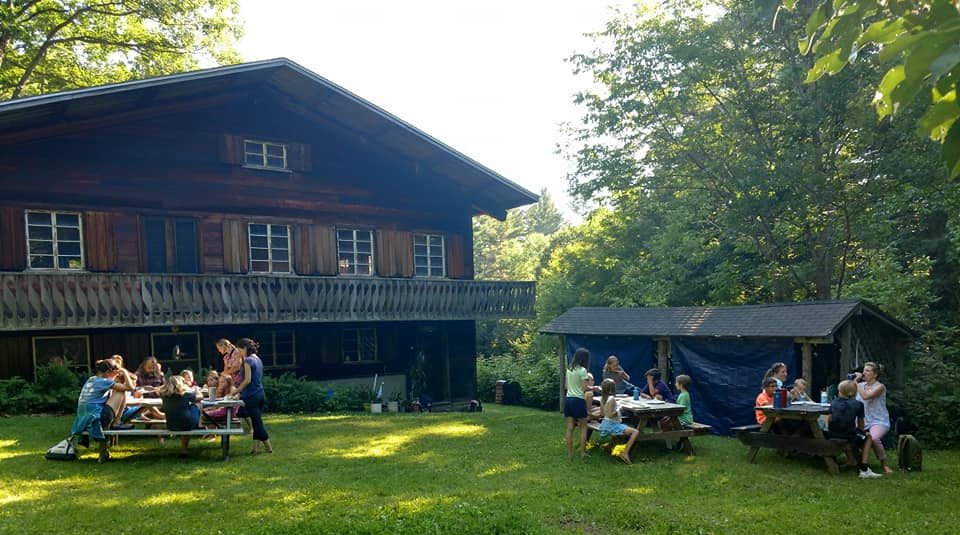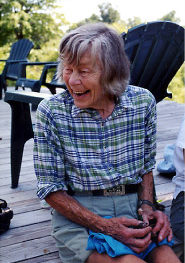Village History
The Game of Village arose from Cia Iselin’s vibrant imagination, her love of play and a visit she made to Madurodam. Of course if you asked her she would have likely said “I didn’t invent Village. All children play village at some point. It was my next door neighbors growing up who first showed me how to play.” And then she might recount to you the following:
“In the City of the Hague in Holland, there is a little city with a big heart. It was built in 1952 by a little lady with a big heart, Bertha Boon van der Starp. She was not much over five feet tall, but had managed to convince corpulent business magnates from the oil fields of Curacoa, the Hallandische Bank, the Holland America Line and Royal Dutch Airlines, that they should give their time, money and energy for the creation of a “miniature reproduction of a “Dutch city with a great past. A city that had grown up in Holland from ancient to modern times, a city with proper town planning and with the very best of everything. A town where people feel happy and where everything is equally beautiful.”
The little city was built to support the Dutch Students Sanatorium, which was desperately needed to rehabilitate thousands of young victims of Hitler’s war, who had been deprived of nourishment and education for four long years. Within its borders is a perfect scale model of the Peace Palace, build in 1912 in the Hague with money from Andrew Carnegie.
Madurodam also enjoys a royal blessing, for its first Mayoress was fourteen year old Princess Beatrix of the Netherlands. Young people continue to play an important role in Madurodam today. Each year 30 boys and girls from the schools in the Hague are elected by their schoolmates to be Madurodam’s aldermen and work in it on their holiday, to keep it fresh and bright.
There is beauty and continuity between the work of Bertha Boon van der Starp in 1952 and what we are trying to do with The Game of Village today.
Village ’71 (1971) was the first experimental Game of Village, and a most enlightening experience for those who took part in it. The input from the younger generation was particularly salutary. It was their ability to play without conceits or inhibitions that created the PEEPS. The miniature people they concocted bore little resemblance to Barbie-doll like mini models that would have pleased the conventional adult. They were real characters, with the most revealing idiosyncrasies, and were to have a profound influence on how Village would grow as a game. Two levels of activity were established in Village lore: that of the Peeps who lived in the miniature world and that of the homesteaders who created them in the real world.
Village ’71 was responsible for another important tradition. With only a dozen or so children and two or three adults playing the game in an informal experimental mode it was discovered that is was easier and more effective for everyone to work within rather than outside of the game… adults (who came to be known as Commissioners) and homesteaders. Everyone developed a Peep, took their roles seriously and shared the responsibility of community building. To the Commissioners’ surprise playing the game with children not only increased their insights but also established a rapport that enhanced discipline.
Across the 1980s and 1990s Village was played a number of places around southern New Hampshire and began to attract the interest of educators who have adapted the program for use in schools in a variety of ways. Village continued as a summer camp in Nelson and was also run at Merrill’s corners in Hancock, in New Ipswitch and for many years in New Boston. In 2010 the summer Village camp returned to the Village of Nelson where it has continued to enthrall young and old alike in several locations.
Village Today
We continue to hold annual summer Village camps, once again in beautiful Nelson NH, back at Cia’s Chalet.
Venues of other Villages
Thanks to many schools, individuals and young people, Village is played throughout the United States and in several Eastern European countries. Villages on the web:
Prairie Creek Village
Marlborough School Village
The Village Project
The Game of Village 2018
The Game of Village 2017
The Game of Village 2016
The Game of Village 2015
The Game of Village 2014
The Game of Village 2013
The Game of Village 2012
The Game of Village 2011




